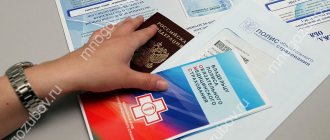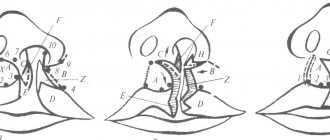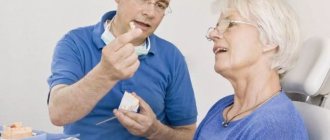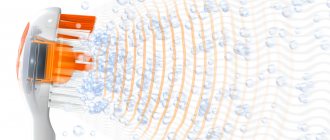What kind of treatment can I get a tax deduction for?
You can receive a tax deduction for any dental services if they were provided in a licensed clinic (Article 219 of the Tax Code). However, there are exceptions, for example, teeth whitening is not included in the list of services for which you can receive a deduction.
Compensation for dental prosthetics
Prosthetics are also included in the list of services for which you can receive a tax deduction. And considering that this is one of the most expensive manipulations, you can get the most attractive payments for prosthetics.
Who can receive a deduction?
Any person who had income in the year of providing dental services on which 13% personal income tax was paid can receive a tax deduction.
What is a social tax deduction for treatment expenses?
All dental services, including implantation and dental prosthetics, are subject to paragraph 3 of Article 219 “Social tax deductions” of the Tax Code of the Russian Federation.
In accordance with the law (Article 219, paragraph 1, paragraph 3 of the Tax Code of the Russian Federation), the tax deduction applies to:
- your treatment;
- treatment of the spouse;
- treatment of parents;
- treatment of children (up to 18 years of age).
The certificate indicates as a patient the family member who received treatment, and as the taxpayer - the one who paid for the treatment and will receive a tax deduction.
The list of medical services for which a deduction is provided is approved by Decree of the Government of the Russian Federation of March 19, 2001 No. 201.
The Russian government has divided all medical services into two lists. List No. 1 – code “1” – treatment is not expensive. List No. 2 – code “2” – expensive treatment.
List No. 1 includes any dental services: caries treatment, tooth extraction, endodontic canal treatment, gum treatment, professional hygiene, bite correction with braces and mouth guards, etc. According to this list, the Government of the Russian Federation limited the amount of tax deduction for the cost of treatment to 120,000 rubles. Even if you spent an amount exceeding 120 thousand rubles on treatment, you will not be able to take it into account when calculating your tax deduction.
List No. 2 includes dental implantation, prosthetics on dental implants, osteoplastic and reconstructive surgical operations on the jaws. According to this list, the upper ceiling of tax deductions is not limited. If you spent more than 120,000 rubles on this, you can qualify for a 13% refund of the entire treatment amount.
You can get a tax deduction even if you are not officially employed
You can receive a tax deduction for dental services not only for your own treatment, but also for services provided to parents, children, and spouse. Thus, even non-working pensioners, schoolchildren, students, people without official income can receive a tax deduction with the help of their relatives with a stable job. How to receive compensation for dental prosthetics for a pensioner? Through relatives who work with official registration. As a rule, one of the parents receives a tax deduction for dental treatment of a child.
Who has the right to receive a personal income tax deduction?
Citizens of the Russian Federation who regularly transfer taxes to the country's budget in the amount established by law can return money for braces in the form of a tax deduction. The following groups of persons may also be eligible for compensation:
- having income and paying 13% tax on it;
- those who have officially paid for the services of medical institutions for the treatment of one or more family members (child, spouse, parents).
Important!
Pensioners with no income for the last 36 months (pensions do not count) and citizens working under UTII or “simplified tax”, or who do not transfer tax to the state budget at all, will not receive compensation funds for orthodontic dental treatment.
Tax refund for dental treatment: instructions
Documentation
Documents for tax deductions for dental treatment must be prepared in advance and submitted all at once. To receive a tax deduction for dental treatment, you need to provide:
- Passport.
- Certificate 2-NDFL and tax return 3-NDFL.
- Application for a deduction.
- Receipt(s) for payment for dental services.
- Agreement with the clinic that provided the services.
- ·Copy of the clinic license.
If you receive a tax deduction for your relative, you need to collect additional documents:
- Child's birth certificate (if the child was treated).
- Birth certificate of the person who will receive the deduction (if the parent was treated).
- Marriage certificate (if services were provided to the husband or wife).
Statement
The application is completed using a special form. It is better to request it from the Federal Tax Service so that you definitely have the correct document. You can look at examples and templates on the Internet, but we do not recommend downloading templates from unfamiliar sites; in this case, it is better to play it safe and once again check that you have the latest and most up-to-date form.
By the way, the tax office can help you fill out an application if you doubt that you can take into account all the nuances yourself.
How to apply for a tax deduction for medical services?
— Collect the necessary documents;
— Draw up a declaration and application indicating the basis for receiving a refund of the paid tax and submit documents to the tax office.
List of documents for obtaining a deduction:
1. A copy of the contract for the provision of medical services, issued to an individual - provided by the clinic;
2. certificate of payment for medical services indicating the code - provided by the clinic ;
3. copy of the license - provided by the clinic ;
4. copies of receipts for payment of medical services;
4. declaration in form 3-NDFL;
5. 2-NDFL certificate from work;
6. copy of passport;
7. copies of documents on relationship, if you paid for treatment for your close relatives (parents, children, spouses);
If you have lost receipts (one or more) for medical services or they have, say, faded, then you retain the right to receive a deduction. The document confirming the fact of payment for treatment will be a certificate of provision of medical services, or we will prepare copies of receipts for you.
After preparing all the documents, you must submit them to the tax office.
The declaration with documents is submitted for consideration to the territorial office of the tax inspectorate, to the Federal Tax Service at the place of registration. You can do it in person, by power of attorney, or through the taxpayer’s Personal Account on the Federal Tax Service Inspectorate website.
3-NDFL with documents are submitted at any time during the year following the reporting year, verified within 3 months. A deduction can be obtained for treatment costs over the past 3 years.
How many times can you use the social tax deduction for treatment?
The deduction can be received an unlimited number of times throughout your life, but not more than once a year.
What is the deductible amount for braces?
Any type of tax deduction is limited to providing maximum amounts for calculating the payment. For braces it is 120 thousand rubles.
This amount may include:
- Payment for dental clinic services.
- Costs for the purchase of related medications, provided they are prescribed by the treating dentist.
Fees for dental clinic services include the cost of the braces system and staff salaries. If we talk about the maximum amount of the deduction itself, it will be 15,600 rubles. We offer for consideration illustrative examples of calculating the deduction for braces.
Example 1. Citizen Ivanova gave her son braces for a total cost of 150 thousand rubles. Ivanova is unemployed, but in the previous year she sold her apartment and paid personal income tax on it in the amount of 200 thousand rubles. Thus, a citizen has the right to count on the maximum deduction amount of 15,600 rubles.
Example 2. Citizen Lyubimova contributed 100 thousand rubles to the state treasury in the form of personal income tax. Having given her child braces for an identical amount, she decided to contact the Federal Tax Service for a refund of the due funds. Lyubimova will receive 13 thousand rubles back.
Example 3. Citizen Sukhoruchkin retired at the age of 55, having worked for more than 20 years at a chemical enterprise. A year after receiving his pension, Sukhoruchkin gave his minor son braces for a total cost of 120 thousand rubles. Since the citizen paid taxes in previous years, before retirement, he has the right to issue a deduction in the amount of 15,600 rubles.
Thus, the calculation of the due amount of payments depends on a number of individual factors.
In what cases is it possible to pay a deduction for braces to a non-working parent?
As mentioned above, a mandatory condition for paying a deduction for braces is paying personal income tax. However, the subtleties of its calculation indicate that the tax is paid not only from official wages, but also from other sources. These include:
- Income from the sale of a car or real estate.
- Profit from renting out housing.
- Earnings from providing civil law services.
- All income presented above is subject to standard income tax.
Its rate is 13%. If in previous periods an unemployed parent paid personal income tax, he has the right to request a deduction for braces.
Registration procedure
The first two paragraphs of paragraph 2 of Article No. 219 of the Tax Code of the Russian Federation regulate the right and procedure for obtaining a tax discount for treatment from an employer or directly from a fiscal authority.
The option with an executive service is not only more convenient, but also profitable.
Let's look at why:
- In order to receive refundable funds from the employer, you will need to request the relevant document from the tax service, and this costs personal time.
- Bite correction is divided into periods, so it is easier to wait until the end of treatment and collect the entire list of necessary documentation at once.
The tax authority may accept the income statement for the last 36 months, and the employer calculates the tax within the calendar year.
In order to receive personal income tax compensation for bite correction with braces, it is important to comply with a number of conditions, namely:
- The hospital where the treatment was carried out provides medical services to the population on the basis of a license from the Russian Federation.
- An individual who expects to pay a deduction receives official earnings from an enterprise or has other income subject to personal income tax in the year in which the payment for the correction was made.
- The taxpayer receiving the deduction paid in full for the installation of the corrective structure and additional medical care for himself or one close relative.
Worth knowing! The amount of deduction for a taxpayer cannot exceed the amount of his profit for the previous reporting year. To put it differently, a citizen can only count on the personal income tax that he contributed to the state treasury.
List of documents
In order to apply for and subsequently receive compensation for orthodontic treatment, it is necessary to collect the established list of documents.
This includes:
- A completed application form on behalf of the taxpayer with a request to provide him with a social deduction.
- Declaration 3-NDFL drawn up by the applicant.
- A certificate from the accounting department of the enterprise , drawn up in form 2-NDFL and highlighting the total amount of tax due for the reporting period. If a citizen is employed in several organizations at once, such an evidentiary document will need to be taken from each of them.
- Documentation confirming family ties . As a rule, this is a marriage registration certificate, a father’s or mother’s passport and its copy, a child’s birth certificate (only for situations where bite correction is paid for to members of the taxpayer’s family).
- Original certificate from the dental clinic , which confirms the fact of payment for the services provided.
- An agreement (contractual document) with a healthcare institution to receive services for installing braces and their maintenance at all stages of correction (license details are required).
- Medical insurance (CHI);
- Papers confirming expenses incurred (checks, receipts and other payment documents).
Attention!!! A certificate from the hospital can only be obtained if bite correction with orthodontic devices has been paid for in full.
To do this, the accounting department requires the presentation of all available receipts. If one or more payments are lost, they will not be included in the total cost of medical care received.
Institutions
The tax authority is the main federal executive service that receives and considers requests from taxpayers for a tax discount for correcting bites with braces.
In addition to the written application, the citizen must provide the employees of the authority located at the place of residence with a package of necessary papers.
It is not necessary to visit the tax office to submit an application. You can use postal services and send all documentation by registered mail with a mandatory list of attachments.
However, in practice, citizens who resort to the last option do not have the opportunity to correct errors, blots and omissions in the completed papers. This leads to refusal of deduction and return of documents to the sender.
During a personal visit to the inspector, inaccuracies can be detected and corrected on the spot, which will significantly speed up the procedure.
Remarkable! In addition to the above methods, the transfer of documents can be carried out through an official representative of the applicant. He must have with him a power of attorney certified in accordance with the established rules in a notary's office.
Registration procedure
The algorithm of actions in the registration process is divided into several stages:
- Collection of documents . The citizen must collect all certificates and documented papers in accordance with the established list.
- Visit to the tax authority to submit an application and additional papers confirming expenses.
- Consideration of the appeal . Tax authority employees can consider a taxpayer’s application within 3 months from the date of its official acceptance. If errors and shortcomings are identified by the inspector, a notification is sent to the applicant. No more than 5 calendar days are allotted for making amendments to documents.
- Transfer of the deduction to the applicant's personal account . After a thorough check of the presented package, tax officials make a positive or negative decision. If the application is granted, the taxpayer receives a deduction within a month.
Remarkable! You can apply for a deduction for treatment only once a year.
Results
It is not difficult to collect documents for income tax refund for treatment. You need to write an application, obtain 2-NDFL certificates, make a copy of your passport, take a certificate of payment for medical services or a prescription form (in case of purchasing medicines), attach copies of the contract, license for medical activities and payment documents, and also fill out a 3-NDFL declaration .
The specified list will have to be supplemented with documents confirming the degree of relationship (birth or marriage certificates) if the applicant of the deduction paid for the treatment of his close relatives.
A deduction can also be claimed for the costs of paying voluntary insurance premiums. In this case, you will additionally need a certified copy of the agreement with the insurance company or an insurance policy, as well as a copy of the license to carry out insurance activities and payment documents.
Sources:
- Tax Code of the Russian Federation
- Decree of the Government of the Russian Federation of March 19, 2001 No. 201
- Order of the Ministry of Health and the Ministry of Taxes of Russia dated July 25, 2001 No. 289/BG-3-04/256
You can find more complete information on the topic in ConsultantPlus. Free trial access to the system for 2 days.











